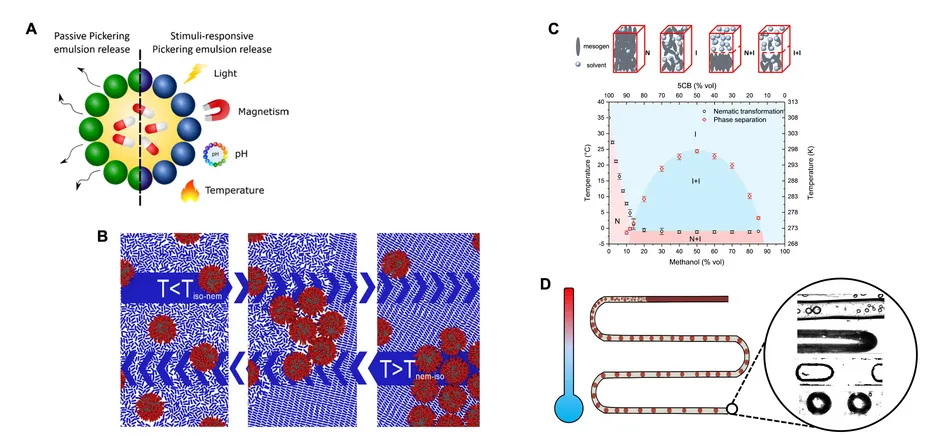Stimuli-Responsive and Multiphase Colloidal Systems

Controlling soft matter structure enables us to design colloidal systems that respond to external stimuli such as pH, temperature, or magnetic fields. By tuning thermodynamic and interfacial properties at the nanoscale, we create architectures that undergo controlled transformations in response to environmental changes.
One example is our work on Pickering emulsions – droplets of one liquid dispersed in another and stabilised by solid particles at the interface. These particle-stabilised emulsions can encapsulate significant payloads and remain stable over long timescales. We have engineered systems that demix in response to external cues: for instance, pH shifts that alter particle solvation or magnetic fields that trigger particle migration. This enables controlled release or on-demand phase separation, with applications in drug delivery, catalysis, or the development of tunable food textures.
Another line of research focuses on combining liquid crystals with colloidal particles. We synthesise nanoparticles with surface functionalities that mimic liquid-crystalline molecules, achieving high solubility in thermotropic liquid crystals. When the liquid crystal is cooled from the isotropic to the nematic phase, these particles co-assemble into ordered arrays with microscale periodicity. This reversible, temperature-controlled process allows precise control over the size and spacing of the assemblies, offering a programmable platform for reconfigurable materials. Potential applications include responsive photonics and adaptive nanocomposites.
We also investigate binary liquid mixtures composed of a thermotropic liquid crystal and a miscible non-nematogenic solvent. Below a critical temperature, these mixtures self-organise in microfluidic channels into complex flow patterns – droplets, plugs, and annular structures – governed by temperature-dependent interfacial tension and viscosity. The size and number of droplets can be tuned by varying the cooling rate and quench depth. When combined with downstream cross-linking, this enables scalable fabrication of micron-sized particles through temperature-induced droplet formation followed by light-activated polymerisation. By tracking the system’s evolution towards equilibrium, we reveal distinct thermodynamic behaviours in bulk versus confined environments.